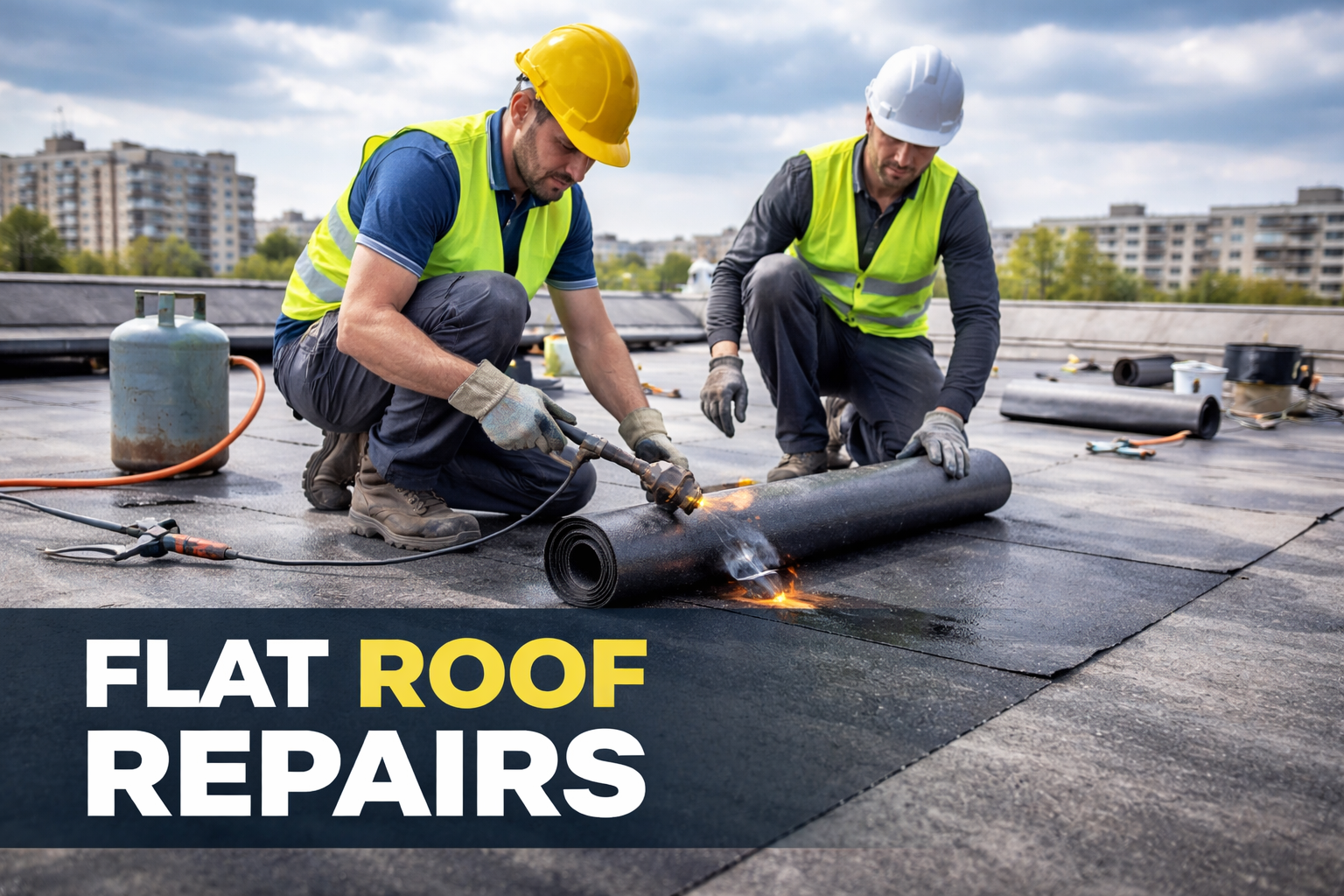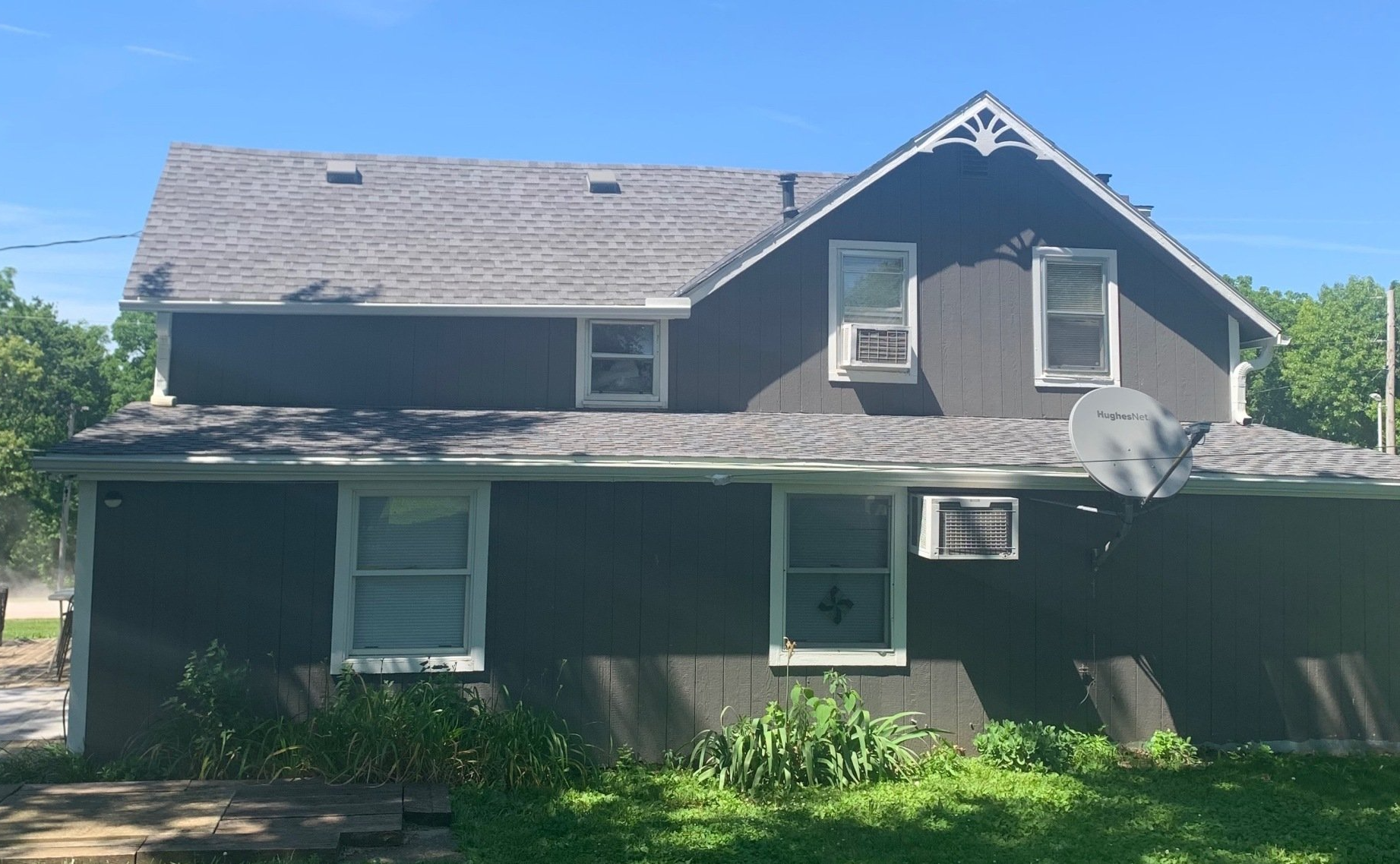How to Make Sure Your Roof is Ready for Storm Season in Kansas City
Spring is upon us, which means storm season in Kansas City. To ensure your roof is ready for storm season, we have the perfect checklist to ensure your house investment stays as damage-free as possible.
No matter the season, it's essential to make sure your roof is ready for storms. Winter brings snow and ice. Spring and Summer bring heavy rain, hail, wind, and lots of sun!
Weather can degrade your shingles, fill your gutters, and damage your roof's structure. But now is the perfect time to be proactive and prepare for storm season to minimize or prevent storm damage to your roof.
Ideally, your roof will make it through storm season unscathed. But follow this simple checklist to ensure your roof is ready for storm season in Kansas City.
Check your gutters, downspouts, and drainage areas.
Check your gutters and downspouts for clogs, dents, and loose or weak fasteners at least every Spring and Fall. Clogged or dented gutters or downspouts can cause water to back up unto your roof and under the shingles. And loose or weakened fasteners can cause gutters to break away from the roof and take pieces of the eaves with them.
Be aware of the water pools near your property's foundation, sidewalks, or driveways. You want to make sure that water can run away from your home's foundation and not towards it.
Check all your trees, especially those near your roof.
Trees are great for providing shade in the summer, but they can also be a hazard to your roof and home if not properly checked.
Check if you have any weak or diseased trees that can snap or become uprooted in heavy winds. You don't necessarily need a professional for this either; look for signs that the tree is under stress.
Trees under stress might have dead limbs, missing bark, withered branches, and deformed or dopped leaves. Trees that are leaning could show they have a weak root system. Call a tree professional if your tree shows any signs that heavy winds could knock it out. They can help determine what needs to be done to save the tree or remove the tree.
Tree branches are also essential to check. High winds can cause the limbs to act like whips, damaging your roof. A tree branch can cause damage to your roof without even falling on it. So trim trees and branches to be at least six feet away from your roof. And remove dead or weakened branches as well.
Inspect your roof or have a professional do roof maintenance.
Roof maintenance is essential to ensuring your roof lasts as long as possible and doesn't cause damage. Before storm season hits, check your roof and attic and spot problems before severe damage occurs from a storm.
For your roof inspection, you will want to clean any debris on your roof and then check the shingles and hardware. Look for the following roofing components that may need repair:
- Cracked or worn boots around the pipes or vents
- Damaged or missing shingles
- Compromised sealant or underlayment
- Visible rust on various roof components like the flashing
- Absent, faulty, or loose nails
By doing a roof inspection, you are making sure that wind and rain can't penetrate the protective layers of your roof. And if you see roofing components that need to be repaired, you can have it done before a storm can cause damage.
And in the attic, you will want to check for water stains and leaks before and after you have some rain. You can ensure your first inspection was accurate by checking before and after.
Buy some tarps before storm season.
Tarps are great to have on hand and are hard to find after a storm. To be prepared for any damage after a storm, buy some tarps and set them aside for emergencies. Tarps can come in handy for temporary repairs and any leaks you discover before they can get fixed.
Make sure your home insurance is up to date.
Make sure that your home insurance has no coverage gaps. Keep your roof warranty and insurance policy together. You can even go one step further and download a claims form in case of power outages that keep you from accessing your policy online. And save updated pictures and videos of your home and valuables to be used after a storm for comparison. It can help expedite your claim and ensure it gets approved.
Secure loose items in your yard.
And right before a storm is about to hit Kansas City, be sure to secure your doors, windows, and any loose items in your yard.
Patio furniture, umbrellas, and lawn decorations can become flying debris in heavy winds. Store them properly in a garage or shed or tie them down to prevent them from causing damage to your home or someone else's.
Flying debris can break windows and increase the pressure inside your home, which can cause your roof to act as a giant parachute. To prevent this, make sure your windows can't be broken by loose items in your yard and that your doors and windows are tightly secured and locked during a severe storm.
Now You Are Ready for Storm Season in Kansas City
None of these steps are challenging but can be time-consuming. So whether you do the checklist this weekend or you hire a roofing professional, like Accent Roofing Group in Kansas City, being proactive in ensuring your roof is ready for storm season in Kansas City can save you money in untimely repairs and damage.




